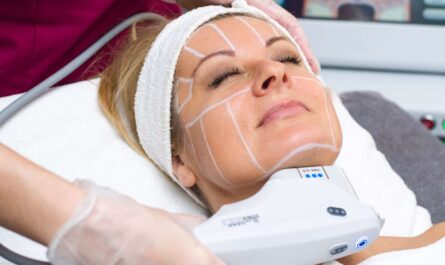
Platelet rich plasma or PRP has gained popularity in recent years as an alternative therapy for treating injuries as well as for anti-aging procedures. PRP utilizes the body’s own healing capabilities by using platelet concentration extracted from the patient’s own blood. Let’s take a deeper look into this innovative healing therapy.
What is PRP?
Platelet rich plasma or PRP is prepared by taking a small amount of the patient’s own blood and processing it to isolate and concentrate the platelets. Platelets are cell fragments in the blood that help facilitate healing. When platelets are injured, they release growth factors and cytokines that stimulate tissue regeneration.
In PRP, the platelet concentration is increased nearly four to five times more than normal blood. This high density of platelets, when injected into injured tissues, helps kickstart the body’s natural healing response. The growth factors and cytokines released by the platelets recruit stem cells and promote cell proliferation and neovascularization which speeds up the healing process.
Uses of PRP in Sports Injuries
PRP has shown promising results for treating sports injuries like tendonitis, muscle strains and tears. The healing properties of PRP help promote tissue regeneration when injected into these injured areas. Some common applications of PRP for sports injuries include:
– Tennis elbow (lateral epicondylitis): PRP injections help repair damaged tendons and reduce pain associated with tennis elbow.
– Golfers elbow (medial epicondylitis): Similarly, PRP speeds up recovery from golfers elbow, an overuse injury of the tendons.
– Achilles tendinopathy: Chronic Achilles tendon injuries are difficult to heal but research shows PRP injections stimulate tissue repair in these cases.
– Hamstring strains: PRP helps mend torn or damaged hamstring muscles and tendons, reducing recovery times.
– Partial rotator cuff tears: For mild to moderate rotator cuff injuries, PRP promotes tendon healing and regeneration.
– Chronic patellar/jumper’s knee: Pain and disability from chronic knee tendon issues responds well to PRP treatment.
PRP reduces the need for opioid painkillers and surgeries in many cases by expediting the body’s natural mending process. This enables athletes to resume rigorous training routines faster.
PRP in Cosmetic Procedures
In the aesthetic medicine field too, PRP has emerged as an effective minimally invasive anti-aging therapy. Some of its applications in this domain include:
– Hair loss: When injected into the scalp, PRP stimulates follicular stem cells leading to thicker and fuller hair.
– Skin rejuvenation: Growth factors in PRP stimulate collagen synthesis for plumping up fine lines and wrinkles. It also improves texture and tone of the skin.
– Acne scarring: PRP promotes new collagen formation to reduce acne scars.
– Brow/eyebrow lift: PRP injections help reinforce and volumize thinning eyebrows damaged by sun exposure.
– Hand rejuvenation: Signs of aging like brown spots and thin skin on hands show improvement with PRP.
– Lip augmentation: PRP provides fuller-looking lips by stimulating collagen and fat volume naturally over 1-2 treatments.
– Stretch marks: PRP aids in reducing the appearance of old stretch marks on abdomen, thighs etc.
Safety and Side Effects of PRP
As PRP uses the patient’s own blood components, allergic reactions or disease transmission risks are negligible. Some temporary side effects like mild swelling or bruising may occur at the injection site but these subside within a few days. To maximize safety, sterile protocols are followed during PRP preparation and administration by a trained medical professional.
PRP has minimal downtime and risks compared to other interventions like cortisone injections, medications or surgeries. However, it may require multiple treatments spaced 4-6 weeks apart for optimal results. Further research is also validating its efficacy but PRP is rapidly becoming a popular non-surgical treatment choice for orthopedic as well as aesthetics applications.
Conclusion
In summary, platelet rich plasma harnesses the body’s natural healing capacities to treat chronic sports injuries, tendon injuries and accelerate recovery. It also offers anti-aging benefits in aesthetic procedures through skin rejuvenation, hair restoration and more. As a natural therapy utilizing the patient’s own blood components, PRP has an excellent safety profile. With proper administration by certified professionals, it is revolutionizing regenerative medicine with quicker recovery times and less invasive options. PRP holds significant promise as a therapy for sports rehabilitation as well as cosmetic enhancement in the years to come.
*Note:
- Source: Coherent Market Insights, Public sources, Desk research
- We have leveraged AI tools to mine information and compile it



